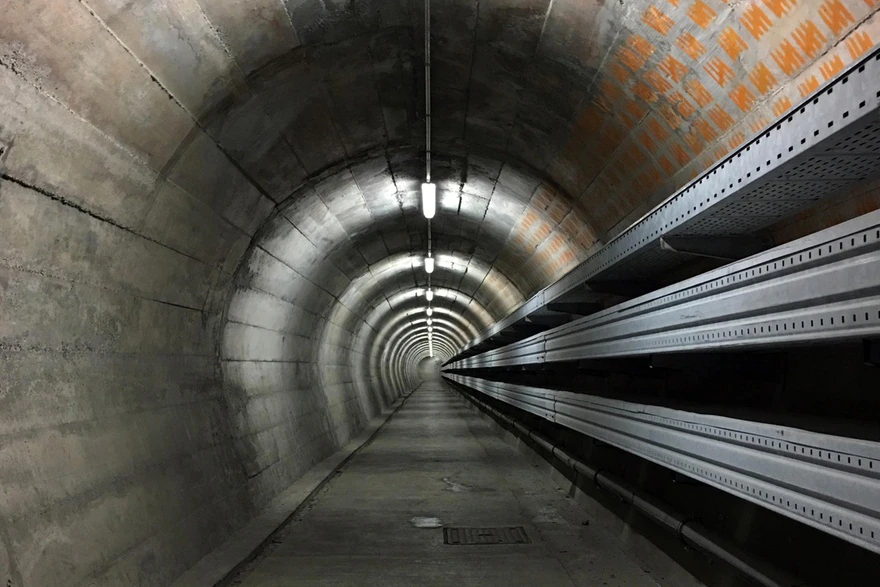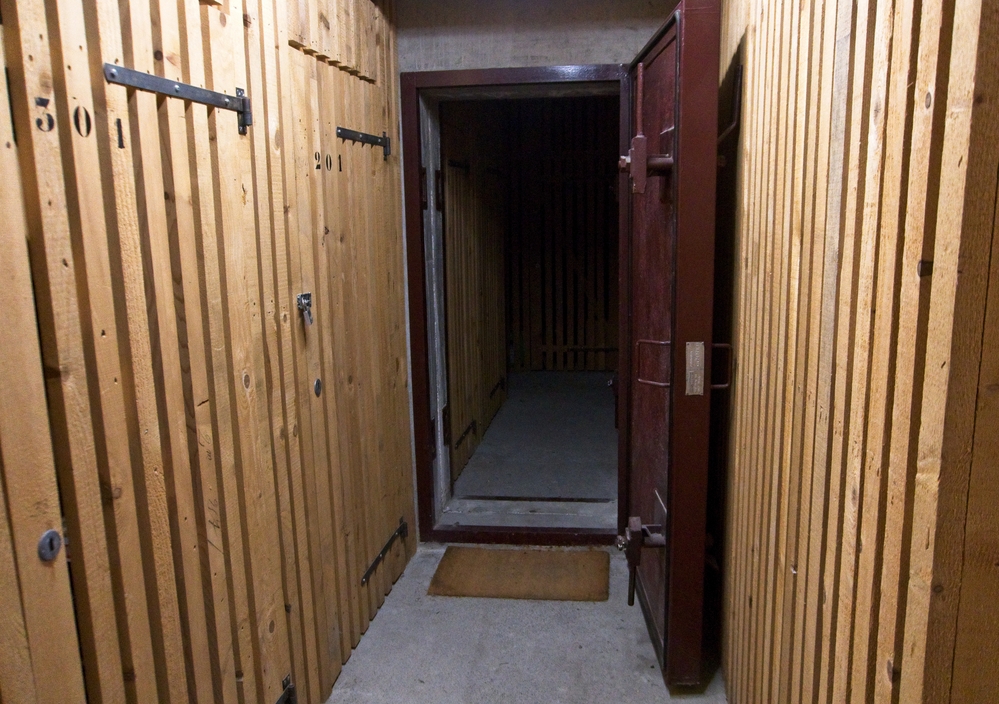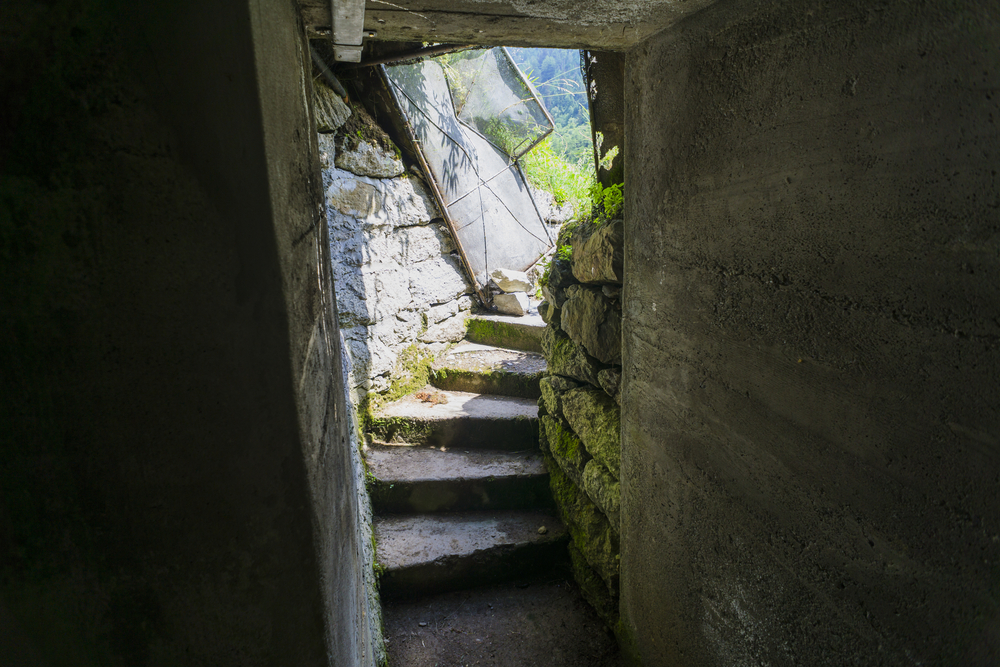Di., Jan. 24th 2023

After Russian President Vladmir Putin’s threat to use nuclear weapons should other countries get involved in the Russo-Ukraine conflict, the Swiss government reassured residents that the country is prepared for every kind of attack – even a nuclear one, with fallout shelters for every resident of Switzerland.
“Neutrality is no guarantee against radioactivity,” was the government slogan that went around at the beginning of the Cold War to fund the building of fallout shelters. A law was passed quickly after that every “inhabitant must have a protected place that can be reached quickly from his place of residence” and “apartment block owners are required to construct and fit out shelters in all new dwellings.” This bunker must either be built into one’s home or apartment building, or residents can pay a special tax to secure a space in a communal shelter.
But these shelters are not typical basements or even what you would use during a tornado. They are built at least 3 meters below ground and the walls are made of several centimeters thick concrete. The doors lock with an airtight seal and the ventilation does not allow deadly nuclear toxins in, but also prevents carbon monoxide poisoning. Shelters are built to be able to withstand a 12-megaton explosion within 700 meters of the blast.
The largest Swiss shelter was constructed at the height of the fallout shelter building boom in the 1970s. Up to 20,000 people can take refuge in the Sonnenberg tunnel in Lucerne. On the floors above the tunnel was constructed a small hospital (with an operating room), a radio broadcast station and a control center to help the survivors get back on their feet. However in 2006, most of the infrastructure was dismantled as nuclear war became less and less of a reality.

The Swiss are not alone
Switzerland is not the only country that has prepared for anything. In Sweden, there is shelter for about 80% of the population and 70% in Finland. In Austria, about 30% have fallout shelters and in Germany, only 3% are covered. Outside of Europe, fallout shelters are common in newer construction projects in India, China, Singapore and South Korea – but none of their figures exceed 50% of the population.
But, do we need these?
As Switzerland spends more than 20% of its federal budget on protecting its citizens from every kind of disaster or invader, there was pushback against continuing to build shelters as a part of new construction projects.
In 2005, a parliament member created an initiative to stop spending on shelters and called then “relics of the past.” In doing its due diligence, the government researched the usefulness of such shelters and concluded months later that not only were they still useful in the event of a war, but could also save people during chemical accidents, natural disasters and possible terrorist attacks.

How to prep your bunker
As I made my way down to my own bomb shelter last week in the basement of my apartment building in Geneva, I found two of my neighbors sorting through bottles of wine and ski equipment.
“Time to fill it again, right?” one of my neighbors said in gruff French, shrugging his shoulders.
“One must be prepared for everything,” his wife replied, going about her work stacking canned foods. I nodded in agreement, trying to look Swiss.
If the Swiss are the most organized and prepared people on earth (and I believe this to be true after living here 8 years), then stocking your nuclear bunker is the height of being Swiss. And no worries about trying to figure out what goes in your bunker, the government has a “vademecum” to guide you
According to the Federal Office for Economic Supply, residents should be expected to stay in their bunkers for up to five days in the event of nuclear war. Every bunker should include:
While one’s shelter should be stocked, all Swiss homes are advised to have at least two months’ worth of food stockpiled, according to the Swiss government.
A week after the First World War began, Swiss store shelves were emptied of rice, coffee, and canned foods, so the Swiss government had to introduce rationing. During WWII, protestors carried banners reading “Hoarding is a betrayal of our Homeland,” but citizens continued to buy too much and cause panic. At the end of that war, the government mandated that every household should stockpile two kilograms of sugar, one liter of oil, 2 kilograms of rice and 1 kilogram of pasta, flour and/or canned food. Citizens appeared to relax in the years following 1945, but stockpiles became popular again when the Soviet Union invaded Hungary in 1956.
According to historian Sibylle Marti, the government campaigns for stockpiling were to “embed the Cold War threat into the everyday lives of the Swiss. This was part of the intellectual defense of the nation aimed at reinforcing national identity and the norms and values that were thought to be Swiss.”
The campaign worked as preparedness became ingrained with the Swiss identity. The government has reasserted the importance of bunkers and stocking them through media campaigns with each global conflict, including the 9/11 attacks, the Covid-19 pandemic and now Russia’s invasion of Ukraine.
Dieser Artikel darf frei weitergegeben und nachgedruckt werden, vorausgesetzt, es wird auf den Originalartikel verwiesen.
